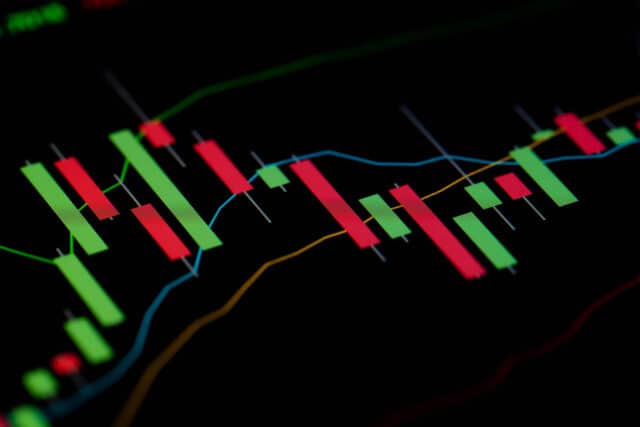Swing trading is a common trading approach that aims at identifying short term trends. Unlike day traders, the strategy aims at holding trades for a few days. In this article, we will look at some of the best practices used by swing traders in the market.
What is swing trading?
There are broadly three types of traders in the forex, stocks, and commodities industry. First, there are day traders whose goal is to identify very short-term trends. They mostly use very short charts between 1 minute and 30 minutes and rarely leave their trades open overnight.
Second, we have position traders or investors who buy and hold trades for a long period. In most cases, the duration ranges from weeks to even months. Their goal is to identify long-term themes and hold their positions for a while.
Finally, there are swing traders who typically hold their trades for a relatively short duration. They do this by identifying themes that will take place in several days. Here are some of their best practices.
Chart timeframes
Forex brokers provide charts that are highly customizable. You can have charts that range from one minute to even monthly. In a one-minute chart, each candlestick tends to represent a minute while in a weekly chart, each bar represents a week.
One of the best practices in swing trading is to identify the best time frames to use. Ideally, we recommend that a trader should do what is known as a multi-timeframe analysis. This is where they first look at the overall trend on a long chart and then narrow down their timeframes. For example, you can start analyzing a monthly chart then move to a weekly, daily, and hourly chart.
Still, the final decision should be taken on a relatively shorter-term chart. Ideally, the most recommended timeframe to use as a swing trader is one that is less than 4 hours. Swing traders should also avoid using very short timeframes like one minute and 30-minutes charts.
Methods of analysis
There are three main types of forex analysis. First, there is technical analysis, which involves analyzing charts using mathematical indicators like moving averages, McClellan Summation Index, and the Donchian Channels. These indicators can give you a picture of where the price of an asset is.
Second, there is fundamental analysis, where a trader uses economic data and news events to predict the direction of an asset. For example, you could short the EURUSD if you expect global risks to rise or when you expect the Federal Reserve to start hiking interest rates.
Finally, there is price action, which is a form of technical analysis. It is a process where you predict the future direction of a currency pair by looking at the overall chart arrangement. For example, you can identify chart patterns like triangles, head and shoulders, and cup and handle. By looking at these patterns, you will be at a good place to predict whether an asset’s price will continue with its original trend or reverse.
Therefore, the best practice in swing trading is that you should have a holistic approach that includes these analysis methods. For example, you should start your analysis by looking at the fundamental view of the currency pair. You should then move to do a technical and price action analysis method.
A common mistake we see with many swing traders is that of using many technical indicators in one chart. It is not uncommon to see a trader have more than 6 indicators in a chart. We suggest that you identify about three indicators that you will use for your analysis.
Master key currency pairs
There are hundreds of currency pairs and thousands of stocks and exchange-traded funds (ETFs). A common mistake we see is where a trader will want to participate in tens of them at a go. While it is possible to make money this way, we recommend that you narrow down to a few assets. For example, if you are a forex trader, we recommend a situation where you focus on around five majors or minor pairs.
Narrowing your focus will help you trade well. It will also help you become an expert in the fewer currency pairs that you are trading. For example, if you are a EUR/USD trader, focusing on it will help you understand its key movers and how it typically trades in a certain duration.
Use pending orders
There are two main types of orders in the forex market. There are market orders and pending orders. A market order is implemented right away while a pending order is implemented in the future only when conditions are met. A buy stop usually opens a bullish trade slightly above the current price while a sell-stop usually opens a short trade below the price.
Similarly, a buy limit usually opens a bullish trade below the current level while a sell limit opens a short trade above the present level. These pending orders can help you open the right trades especially when you are looking at breakouts.
Risk management
The next best practice when using the swing trading approach is known as risk management. This is a situation where you minimize risks and maximize returns. Some of the top approaches to reduce your risks are position sizing, using lower leverage, and not over-trading.
On position sizing, you should ensure that your trades don’t over-expose you to substantial risks. Similarly, on leverages, you should generally use the proper size of leverage when trading. Further, you should ensure that all your trades are protected by a stop-loss and a take-profit.
In all, we recommend that you use the best risk management strategies when you are trading. Doing this will help you stay safe in the financial market.
Summary
Swing trading is an effective trading strategy in the forex market. It involves leaving trades open for a few days. Using some of these best practices will help you avoid significant risks while maximizing your returns.




